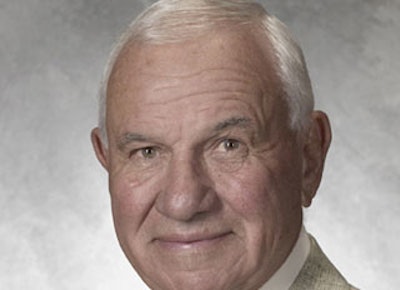
A CEO and CFO of a food processing company are faced with a dilemma.
Their major clients are a part of an organization of food retailers who have set food safety standards that they require of their suppliers.
The requirement is not unlike ISO 9000 in that the food processor must show functions that include the proper installation of the proper part using the proper lubricant, etc. The functions must be documented or the clients can reject shipments and commitments.
The dilemma is caused by senior management’s concerns over how to get the mechanics to follow the required procedures consistently. The mechanics have been following certain rules and directions for years. Now they are not only faced with change, they have to document and prove that the proper food grade lubricant was used on the bearing installation, etc. The parts they request from the storeroom are the parts they are given. There is no guidance or questioning from storeroom attendants whose job description is to do what they are told.
The required new products were put into SKUs, but requisitioners continue to use the same old parts because that’s what they have always done. Nothing changes with the addition of the new and correct parts because stores clerks do not challenge the requisitioners regarding where the parts are used.
The solution lies with a change of MRO Stores management that will establish rules and procedures that will connect activities to satisfy the food safety standards set by the customer. This means that the stores attendant is trained and has the authority to require proof that the parts are properly applied.
History shows that changing a long-standing procedure is not 100 percent effective, which is required in this situation. Ninety-nine percent is no good because the 1 percent could cause serious health and downtime issues and the loss clients because of unreliability.
How can change be achieved and reliability sustained?
With an on-site storeroom management company in control of parts with exact specifications and in control of what part goes to what machine, the dilemma can be solved. The on-site management company personnel would not issue the wrong part for the wrong machine because of job descriptions audited by their management to agreed KPIs reflecting the client’s needs.
It is important to note that there are stores management consultants who will set forth procedures designed to solve the problem. Well, the problem remains since the consultants will recommend, but they do not do, and the recommended changes are not sustained.
The management company would stop all “buy around” activity and dictate to the Facilities Management mechanics that no substitute can be made on designated critical operations where documentation is required.
Values to the company:
- Satisfies audit and client base requirements
- Provides proper process and parts
- Retains client base
- Reduces the cost of errors
For guidance to management companies that could fit your needs, contact George Krauter at [email protected] or 610-246-6492.
George Krauter currently serves as Vice President for Storeroom Solutions Inc., Radnor Pa. He has participated as a guest speaker at Reliability 2.0, ISM Indirect Conference, The Conference Board, and events for APICS, SMRP and ISM professional chapters. Mr. Krauter is recognized as an authority on methods to achieve reliable, maintenance-connected MRO storerooms; he has published his experiences in Uptime, Modern Distribution Management, My Purchasing Center, and Supply & Demand Chain Executive. He holds a B.A. and M.B.A.A. from Temple University and has conducted seminars internationally [Oslo, Abu Dhabi] as well as sessions at Duke, MIT, Howard and Temple universities. He lives in Bucks County, Pa., with his wife Joyce; all grandkids live within eating distance.





















